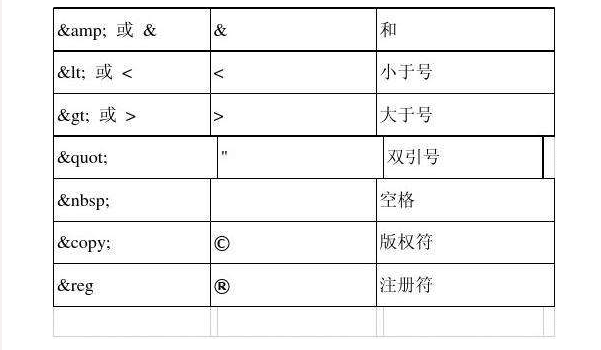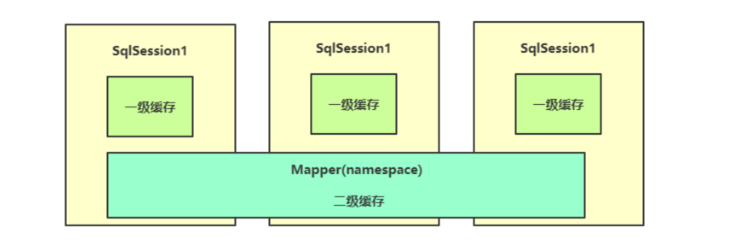文章目录
- Mybatis基础
- XML语言概述
- 使用Mybatis
- 配置Mybatis
- 增删改查
- 复杂查询
- 事务操作
- 动态 SQL
- if
- choose、when、otherwise
- 缓存机制
- 注解开发
Mybatis基础
虽然我们能够通过JDBC来连接和操作数据库,但是哪怕只是完成一个SQL语句的执行,都需要编写大量的代码,更不用说如果我还需要进行实体类映射,将数据转换为我们可以直接操作的实体类型,JDBC很方便,但是还不够方便。
MyBatis 是一款优秀的持久层框架,它支持定制化 SQL、存储过程以及高级映射。MyBatis 避免了几乎所有的 JDBC 代码和手动设置参数以及获取结果集。
MyBatis 可以使用简单的 XML 或注解来配置和映射原生信息,将接口和 Java 的 POJOs(Plain Ordinary Java Object,普通的 Java对象)映射成数据库中的记录。
XML语言概述
XML语言发明最初是用于数据的存储和传输
HTML主要用于通过编排来展示数据,而XML主要是存放数据,它更像是一个配置文件
<?xml version="1.0" encoding="UTF-8" ?>
<outer><name>阿伟</name><desc>怎么又在玩电动啊</desc><inner type="1"><age>10</age><sex>男</sex></inner>
</outer>
一个XML文件存在以下的格式规范:
- 必须存在一个根节点,将所有的子标签全部包含
- 可以但不必须包含一个头部声明(主要是可以设定编码格式)
- 所有的标签必须成对出现,可以嵌套但不能交叉嵌套
- 区分大小写
- 标签中可以存在属性,属性的值由单引号或双引号包括
XML文件也可以使用注释:
<?xml version="1.0" encoding="UTF-8" ?>
<!-- 注释内容 -->
内容中出现特定字符需要使用转义字符:

使用CD来快速创建不解析区域:
<test><name><![CDATA[我看你<><><>是一点都不懂哦>>>]]></name>
</test>
使用Mybatis
导入Mybatis的依赖
编写Mybatis的配置文件:在项目根目录下新建名为mybatis-config.xml
<?xml version="1.0" encoding="UTF-8" ?>
<!DOCTYPE configurationPUBLIC "-//mybatis.org//DTD Config 3.0//EN""http://mybatis.org/dtd/mybatis-3-config.dtd">
<configuration><environments default="development"><environment id="development"><transactionManager type="JDBC"/><dataSource type="POOLED"><property name="driver" value="${驱动类(含包名)}"/><property name="url" value="${数据库连接URL}"/><property name="username" value="${用户名}"/><property name="password" value="${密码}"/></dataSource></environment></environments>
</configuration>
通过进行配置告诉了Mybatis我们链接数据库的一些信息,包括URL、用户名、密码等
Mybatis对配置文件进行读取并得到一个SqlSessionFactory对象:
public static void main(String[] args) throws FileNotFoundException {SqlSessionFactory sqlSessionFactory = new SqlSessionFactoryBuilder().build(new FileInputStream("mybatis-config.xml"));try (SqlSession sqlSession = sqlSessionFactory.openSession(true)){//暂时还没有业务}
}
每个基于 MyBatis 的应用都是以一个 SqlSessionFactory 的实例为核心的,可以通过SqlSessionFactory来创建多个新的会话
配合lombok编写实体类:
import lombok.Data;@Data
public class Student {int sid; //名称最好和数据库字段名称保持一致,不然可能会映射失败导致查询结果丢失String name;String sex;
}
在根目录下重新创建对象映射器文件TestMapper.xml:
<?xml version="1.0" encoding="UTF-8" ?>
<!DOCTYPE mapperPUBLIC "-//mybatis.org//DTD Mapper 3.0//EN""http://mybatis.org/dtd/mybatis-3-mapper.dtd">
<mapper namespace="TestMapper"><select id="selectStudent" resultType="com.test.entity.Student">select * from student</select>
</mapper>
其中namespace就是命名空间,每个Mapper都是唯一的,因此需要用一个命名空间来区分,它还可以用来绑定一个接口。
写入了一个select标签,表示添加一个select操作,同时id作为操作的名称,resultType指定为我们刚刚定义的实体类,表示将数据库结果映射为Student类,然后就在标签中写入我们的查询语句即可。
在配置文件中添加这个Mapper映射器:
<mappers><mapper url="file:mappers/TestMapper.xml"/><!-- 这里用的是url,也可以使用其他类型 -->
</mappers>
在程序中使用定义好的Mapper:
public static void main(String[] args) throws FileNotFoundException {SqlSessionFactory sqlSessionFactory = new SqlSessionFactoryBuilder().build(new FileInputStream("mybatis-config.xml"));try (SqlSession sqlSession = sqlSessionFactory.openSession(true)){List<Student> student = sqlSession.selectList("selectStudent");student.forEach(System.out::println);}
}
Mybatis非常智能,只需要告诉一个映射关系,就能够直接将查询结果转化为一个实体类
配置Mybatis
由于SqlSessionFactory一般只需要创建一次,因此我们可以创建一个工具类来集中创建SqlSession,这样会更加方便一些:
public class Mybatis {private static SqlSessionFactory sqlSessionFactory;static {try {sqlSessionFactory = new SqlSessionFactoryBuilder().build(new FileInputStream("mybatis-config.xml"));} catch (FileNotFoundException e) {throw new RuntimeException(e);}}public static SqlSession getSession(boolean autoCommit) {return sqlSessionFactory.openSession(autoCommit);}
}
public static void main(String[] args) {try (SqlSession sqlSession = MybatisUtil.getSession(true)){List<Student> student = sqlSession.selectList("selectStudent");student.forEach(System.out::println);}
}
每次都需要去找映射器对应操作的名称,而且还要知道对应的返回类型,再通过SqlSession来执行对应的方法,能不能再方便一点呢?
通过namespace来绑定到一个接口上,利用接口的特性,我们可以直接指明方法的行为,而实际实现则是由Mybatis来完成。
public interface TestMapper {List<Student> selectStudent();
}
将Mapper文件的命名空间修改为我们的接口,建议同时将其放到同名包中,作为内部资源:
<mapper namespace="com.test.mapper.TestMapper"><select id="selectStudent" resultType="com.test.entity.Student">select * from student</select>
</mapper>
修改一下配置文件中的mapper定义,不使用url而是resource表示是Jar内部的文件:
<mappers><mapper resource="com/test/mapper/TestMapper.xml"/>
</mappers>
可以直接通过SqlSession获取对应的实现类,通过接口中定义的行为来直接获取结果:
public static void main(String[] args) throws FileNotFoundException {try(SqlSession session = Mybatis.getSession(true)) {//自动提交TestMapper testMapper = session.getMapper(TestMapper.class);List<Student> selectStudent = testMapper.selectStudent();selectStudent.forEach(System.out::println);}
}
TestMapper是通过动态代理生成的,相当于动态生成了一个实现类,而不是预先定义好的
配置文件介绍:
<configuration><environments default="development"><environment id="development"><transactionManager type="JDBC"/><dataSource type="POOLED"><property name="driver" value="com.mysql.cj.jdbc.Driver"/><property name="url" value="jdbc:mysql://localhost:3306/study"/><property name="username" value="test"/><property name="password" value="123456"/></dataSource></environment></environments><mappers><mapper resource="com/test/mapper/TestMapper.xml"/></mappers>
</configuration>
environments标签指定一个数据库的配置信息,包含连接URL、用户、密码等信息
实际情况下可能会不止有一个数据库连接信息,比如开发过程中我们一般会使用本地的数据库,而如果需要将项目上传到服务器或是防止其他人的电脑上运行时,我们可能就需要配置另一个数据库的信息
在environments标签上有一个default属性,来指定默认的环境
也可以在创建工厂时选择环境:
sqlSessionFactory = new SqlSessionFactoryBuilder().build(new FileInputStream("mybatis-config.xml"), "环境ID");
可以给类型起一个别名:
<!-- 需要在environments的上方 -->
<typeAliases><typeAlias type="com.test.entity.Student" alias="Student"/>
</typeAliases>
直接让Mybatis去扫描一个包,并将包下的所有类自动起别名(别名为首字母大小写都行的类名):
<typeAliases><package name="com.test.entity"/>
</typeAliases>
也可以为指定实体类添加一个注解,来指定别名:
@Data
@Alias("lbwnb")
public class Student {private int sid;private String name;private String sex;
}
增删改查
resultType可以被映射到一个Map上:
<select id="selectStudent" resultType="Map">select * from student
</select>
public interface TestMapper {List<Map> selectStudent();
}
Map中就会以键值对的形式来存放这些结果了
通过设定一个resultType属性,让Mybatis知道查询结果需要映射为哪个实体类,要求字段名称保持一致。
自定义resultMap来设定映射规则:
<resultMap id="Test" type="Student"><result column="id" property="id"/><result column="name" property="name"/>
</resultMap>
<select id="selectStudent" resultMap="Test">select * from student
</select>
column表示数据库字段名称,property表示实体类字段名称
如果一个类中存在多个构造方法,那么很有可能会出现错误
使用constructor标签来指定构造方法:
<resultMap id="test" type="Student"><constructor><arg column="sid" javaType="Integer"/><arg column="name" javaType="String"/></constructor>
</resultMap>
指定构造方法后,若此字段被填入了构造方法作为参数,将不会通过反射给字段单独赋值,而构造方法中没有传入的字段,依然会被反射赋值
如果只有一个构造函数或者全量构造函数都会先调用一遍构造函数,然后使用反射进行字段单独赋值
数据库中存在一个带下划线的字段,我们可以通过设置让其映射为以驼峰命名的字段,比如my_test映射为myTest:
<settings><setting name="mapUnderscoreToCamelCase" value="true"/>
</settings>
条件查询:想通过sid字段来通过学号查找信息
Student getStudentBySid(int sid);
<select id="getStudentBySid" parameterType="int" resultType="Student">select * from student where sid = #{sid}
</select>
通过使用#{xxx}或是${xxx}来填入我们给定的属性,实际上Mybatis本质也是通过PreparedStatement首先进行一次预编译,有效地防止SQL注入问题,但是如果使用${xxx}就不再是通过预编译,而是直接传值,因此我们一般都使用#{xxx}来进行操作。
使用parameterType属性来指定参数类型(非必须,可以不用,推荐不用)
插入、更新和删除操作:
<insert id="addStudent" parameterType="Student">insert into student(name, sex) values(#{name}, #{sex})
</insert>
int addStudent(Student student);
复杂查询
@Data
public class Teacher {int tid;String name;List<Student> studentList;
}
一个老师可以教授多个学生,那么能否一次性将老师的学生全部映射给此老师的对象呢
映射为Teacher对象时,同时将其教授的所有学生一并映射为List列表,显然这是一种一对多的查询,那么这时就需要进行复杂查询了。
现在需要使用resultMap来自定义映射规则:
<select id="getTeacherByTid" resultMap="asTeacher">select *, teacher.name as tname from student inner join teach on student.sid = teach.sidinner join teacher on teach.tid = teacher.tid where teach.tid = #{tid}
</select><resultMap id="asTeacher" type="Teacher"><id column="tid" property="tid"/><result column="tname" property="name"/><collection property="studentList" ofType="Student"><id column="sid" property="sid"/><result column="name" property="name"/><result column="sex" property="sex"/></collection>
</resultMap>
id标签用于在多条记录中辨别是否为同一个对象的数据
通过使用collection来表示将得到的所有结果合并为一个集合,比如上面的数据中每个学生都有单独的一条记录,因此tid相同的全部学生的记录就可以最后合并为一个List,得到最终的映射结果,当然,为了区分,最好也设置一个id,只不过这个例子中可以当做普通的result使用。
@Data
@Accessors(chain = true)
public class Student {private int sid;private String name;private String sex;private Teacher teacher;
}@Data
public class Teacher {int tid;String name;
}
可以使用resultMap来实现:
<resultMap id="test2" type="Student"><id column="sid" property="sid"/><result column="name" property="name"/><result column="sex" property="sex"/><association property="teacher" javaType="Teacher"><id column="tid" property="tid"/><result column="tname" property="name"/></association>
</resultMap>
<select id="selectStudent" resultMap="test2">select *, teacher.name as tname from student left join teach on student.sid = teach.sidleft join teacher on teach.tid = teacher.tid
</select>
事务操作
获取SqlSession关闭自动提交来开启事务模式:
public static void main(String[] args) {try (SqlSession sqlSession = MybatisUtil.getSession(false)){TestMapper testMapper = sqlSession.getMapper(TestMapper.class);testMapper.addStudent(new Student().setSex("男").setName("小王"));testMapper.selectStudent().forEach(System.out::println);}
}
提交事务:
sqlSession.commit();
事务回滚:
sqlSession.rollback();
动态 SQL
动态 SQL 是 MyBatis 的强大特性之一。可以根据不同条件拼接 SQL 语句
if
<select id="findActiveBlogWithTitleLike"resultType="Blog">SELECT * FROM BLOGWHERE state = ‘ACTIVE’<if test="title != null">AND title like #{title}</if>
</select>
如果不传入 “title”,那么所有处于 “ACTIVE” 状态的 BLOG 都会返回;如果传入了 “title” 参数,那么就会对 “title” 一列进行模糊查找并返回对应的 BLOG 结果
choose、when、otherwise
有时候,我们不想使用所有的条件,而只是想从多个条件中选择一个使用。针对这种情况,MyBatis 提供了 choose 元素,它有点像 Java 中的 switch 语句。
<select id="findActiveBlogLike"resultType="Blog">SELECT * FROM BLOG WHERE state = ‘ACTIVE’<choose><when test="title != null">AND title like #{title}</when><when test="author != null and author.name != null">AND author_name like #{author.name}</when><otherwise>AND featured = 1</otherwise></choose>
</select>
缓存机制
Mybatis内置了一个缓存机制,我们查询时,如果缓存中存在数据,那么我们就可以直接从缓存中获取,而不是再去向数据库进行请求。
Mybatis存在一级缓存和二级缓存,默认情况下,只启用了本地的会话缓存,它仅仅对一个会话中的数据进行缓存(一级缓存无法关闭,只能调整)

一级缓存,在进行DML操作后,会使得缓存失效。
当前会话结束后,也会清理全部的缓存,因为已经不会再用到了。
一级缓存只针对于单个会话,多个会话之间不相通。
public static void main(String[] args) throws InterruptedException {try (SqlSession sqlSession = MybatisUtil.getSession(true)){TestMapper testMapper = sqlSession.getMapper(TestMapper.class);Student student1 = testMapper.getStudentBySid(1);Student student2 = testMapper.getStudentBySid(1);System.out.println(student1 == student2);}
}
一级缓存给我们提供了很高速的访问效率,但是它的作用范围实在是有限,如果一个会话结束,那么之前的缓存就全部失效了
如果希望缓存能够扩展到所有会话都能使用,可以通过二级缓存来实现
二级缓存默认是关闭状态,要开启二级缓存,需要在映射器XML文件中添加:
<cache/>
<cacheeviction="FIFO" //缓存淘汰策略flushInterval="60000" //缓存刷新间隔size="512" //缓存个数readOnly="true"/> //只读缓存
如果我不希望某个方法开启缓存呢?我们可以添加useCache属性来关闭缓存:
<select id="getStudentBySid" resultType="Student" useCache="false">select * from student where sid = #{sid}
</select>
可以使用flushCache="false"在每次执行后都清空缓存,通过这这个我们还可以控制DML操作完成之后不清空缓存。
<select id="getStudentBySid" resultType="Student" flushCache="true">select * from student where sid = #{sid}
</select>
添加了二级缓存之后,会先从二级缓存中查找数据,当二级缓存中没有时,才会从一级缓存中获取,当一级缓存中都还没有数据时,才会请求数据库
如果存在多台服务器或者是多个程序都在使用Mybatis操作同一个数据库,并且都开启了缓存会存在缓存一致性问题,此时得关闭Mybatis的缓存来保证一致性:
<settings><setting name="cacheEnabled" value="false"/>
</settings>
<select id="getStudentBySid" resultType="Student" useCache="false" flushCache="true">select * from student where sid = #{sid}
</select>
注解开发
直接使用注解来实现XML中定义映射规则和SQL语句并绑定到一个接口的方法定义上
@Insert("insert into student(name, sex) values(#{name}, #{sex})")
int addStudent(Student student);
修改一下配置文件中的映射器注册:
<mappers><mapper class="com.test.mapper.MyMapper"/><!-- 也可以直接注册整个包下的 <package name="com.test.mapper"/> -->
</mappers>
进行自定义映射规则:
@Results({@Result(id = true, column = "sid", property = "sid"),@Result(column = "sex", property = "name"),@Result(column = "name", property = "sex")
})
@Select("select * from student")
List<Student> getAllStudent();
@Result注解数组,每个@Result注解都都一个单独的字段配置
复杂查询:
@Results({@Result(id = true, column = "tid", property = "tid"),@Result(column = "name", property = "name"),@Result(column = "tid", property = "studentList", many =@Many(select = "getStudentByTid"))
})
@Select("select * from teacher where tid = #{tid}")
Teacher getTeacherBySid(int tid);@Select("select * from student inner join teach on student.sid = teach.sid where tid = #{tid}")
List<Student> getStudentByTid(int tid);
多出了一个子查询,而这个子查询是单独查询该老师所属学生的信息,而子查询结果作为@Result注解的一个many结果,代表子查询的所有结果都归入此集合中(也就是之前的collection标签)
@Result也提供了@One子注解来实现一对一的关系表示,类似于之前的assocation标签:
@Results({@Result(id = true, column = "sid", property = "sid"),@Result(column = "sex", property = "name"),@Result(column = "name", property = "sex"),@Result(column = "sid", property = "teacher", one =@One(select = "getTeacherBySid"))
})
@Select("select * from student")
List<Student> getAllStudent();
直接使用注解编写SQL语句但是我希望映射规则依然使用XML来实现,提供了@ResultMap注解,直接指定ID即可:
@ResultMap("test")
@Select("select * from student")
List<Student> getAllStudent();
通过@ConstructorArgs注解来指定构造方法:
@ConstructorArgs({@Arg(column = "sid", javaType = int.class),@Arg(column = "name", javaType = String.class)
})
@Select("select * from student where sid = #{sid} and sex = #{sex}")
Student getStudentBySidAndSex(@Param("sid") int sid, @Param("sex") String sex);
当参数列表中出现两个以上的参数时,添加@Param来指定参数名称:
@Select("select * from student where sid = #{sid} and sex = #{sex}")
Student getStudentBySidAndSex(@Param("sid") int sid, @Param("sex") String sex);
通过参数名称.属性的方式去让Mybatis知道我们要用的是哪个属性:
@Insert("insert into student(sid, name, sex) values(#{sid}, #{student.name}, #{student.sex})")
int addStudent(@Param("sid") int sid, @Param("student") Student student);
注解控制缓存机制:
@CacheNamespace(readWrite = false)
public interface MyMapper {@Select("select * from student")@Options(useCache = false)List<Student> getAllStudent();
Sex(@Param(“sid”) int sid, @Param(“sex”) String sex);
当参数列表中出现两个以上的参数时,添加`@Param`来指定参数名称:~~~java
@Select("select * from student where sid = #{sid} and sex = #{sex}")
Student getStudentBySidAndSex(@Param("sid") int sid, @Param("sex") String sex);
通过参数名称.属性的方式去让Mybatis知道我们要用的是哪个属性:
@Insert("insert into student(sid, name, sex) values(#{sid}, #{student.name}, #{student.sex})")
int addStudent(@Param("sid") int sid, @Param("student") Student student);
注解控制缓存机制:
@CacheNamespace(readWrite = false)
public interface MyMapper {@Select("select * from student")@Options(useCache = false)List<Student> getAllStudent();
使用@CacheNamespace注解直接定义在接口上即可,然后我们可以通过使用@Options来控制单个操作的缓存启用。
)




)

)





)




